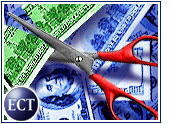
There’s nothing quite like taking a Ferrari out on the open highway. There’s also nothing quite like taking a Ferrari out on a muddy, potholed, traffic-congested road.
The dilemma facing a company doing business online today is that the temptation to build the flashiest Web site on the Net is tempered by the fear that the souped-up site will hit a dead end with an audience lacking the technical means to enjoy it.
Ultimately, deciding when and how to use enhanced Web technology is tricky but worth the effort, studies and analysts say. The key for companies is finding a way to stay faithful to their budget, their audience, and their core mission.
Benefits of Flash
A Web site that is fun just for the sake of being fun, or creative for the sake of being creative, can electrify a customer. That excitement can translate into revenues as well as good word-of-mouth for a company.
Furthermore, splashy Web site technology can also play a direct role in solving the problems of doing business on the Internet. Jupiter Research analyst Lydia Loizides said that while online retailers have correctly focused on easing the purchase process for customers, they have neglected to optimize the method of selecting the product in the first place.
“What you do a lot of the time in the search and evaluation process will affect the post-evaluation process very heavily,” Loizides told the E-Commerce Times.
Loizides noted that brick-and-click apparel vendor NineWest, suffering from a high rate of return on products purchased from its Web site, incorporated zoom technology into the site and managed to cut product returns in half. Customers were apparently less surprised (and disappointed) by what they had bought.
Meanwhile, struggling pure-play Furniture.com allows the consumer to drag and drop dressers and sofas into virtual rooms matching those in a consumer’s own residence, to see if the potential purchases lay out pleasingly.
Taking Stock of the Audience
Loizides’ comments were made in light of a Jupiter study that found that less than 20 percent of retailers use Java, Flash or chat functions to enhance online shopping experience and close sales.
According to Loizides, merchants in specific categories, such as consumer electronics, apparel, home furnishings, real estate and automotive, must deploy these technologies or risk losing customers to those that offer a more colorful online experience.
“You have to consider that the audience is becoming more mature,” Loizides said. “You’re not talking about a bunch of newbies. People are willing to take chances. People are willing to download.”
However, even as the number of individual Internet users in the U.S. races toward the 100 million mark, there are large gaps where even the most savvy shopper is hamstrung by unsophisticated means of Net access.
The Broadband Conundrum
A low percentage of Americans have high-speed Internet access, which comes mainly through cable and digital subscriber line (DSL) services. Broadband development, though accelerating, is in its infancy, according to eMarketer senior technology analyst Brian Gilman.
“We’re kind of in a Catch-22,” Gilman told the E-Commerce Times. “Content providers were going to be building up their service to provide rich content. They’ve stalled in doing that because so few people have access to broadband.”
Added Gilman, “At the same time, the service providers were supposed to get people access, but they’ve been slower in deploying this because there’s not much out there on the Internet that really uses broadband speed.”
eMarketer, which assimilates research data from multiple sources, said in a September report that 14.6 percent of households that access the Internet do so via broadband connections. By 2003, eMarketer said that number will grow to 39.7 percent — still not a majority.
Skip Intro (Please)
Not too many users enjoy riding in the slow lane, but for reasons of infrastructure or cost, they are left with little choice. A Web site that has several sizeable elements to download can compound that frustration.
Some sites — though by no means all — offer users a link that allows them to skip elaborate introductions. Until speed and capacity reach the great majority of the Internet audience, this feature would seem to be a requirement.
“Many developers have been viewing [enhanced Web technology] as an either-or proposition,” Loizides said. “You really need to find ways to address all groups.”
Smart Choices Required
The conclusion may seem obvious, but plenty of companies need to hear it. When it comes to implementing enhanced Web technology, a sober, timely, targeted approach is called for.
“The question is, is it worth the investment, because it costs a lot of money to upgrade your services,” Gilman said. “It’s up to the individual companies to decide.”
Loizides seconded that companies should not supercharge their Web sites at the expense of ignoring problems that Flash or Java cannot solve. She did emphasize, however, that splash and flair can solve more problems than one might think.
“You can start to do this now,” Loizides said. “Bring it in slowly, bring it in where it makes sense.”
Bearing this concept in mind, don’t expect a impetuous rush into enhanced Web technology from all the major e-commerce players.
“What is the benefit of Amazon using Flash?” Gilman asked. “I don’t know if there is one.”












































Social Media
See all Social Media